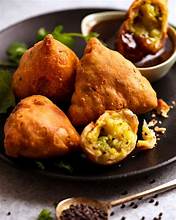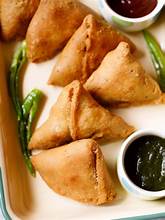Best Vegetable Samosa
Best vegetable samosa is the tasty snake for everyone and everyday
The best Vegetable Samosa is a crispy mariyu tasty pastry filled with delicious kuragayalu and also with spices,it is a beloved snack enjoyed by people throughout worldwide also. Originating from the India subcontinent, this triangular-shaped best vegetable samosa has transcended cultural boundaries and become a global favorite item. Whether they served at parties, street food stalls, or family gatherings, the bestvegetable samosa offers a satisfying crunch and a burst of flavors with every bite. In this article, we’ll explore everything there is to know about best veg vegetable samosas, from their history to how they’re made, and why they remain such a popular choice of best vegetable samosa today.
Best vegetable samosa origin
The best vegetable samosa have an interesting history that spans centuries and regions. While many associate the samosa with India, its roots trace back to the Middle East, where it was originally known as “sambosa” or “samsa.” Traders and travelers from Persia brought the dish to India during the medieval period, and it quickly adapted to local tastes and ingredients. In India, the samosa evolved into its current form, filled with spiced potatoes, peas, and other vegetables.
Over time, samosas became a staple snack across South Asia, with each region developing its own variations. While the meat-filled versions are also popular, the vegetable samosa has gained widespread appeal due to its vegetarian ingredients and versatile flavors.
Best vegetable samosa special
Here why best vegetable samosas are loved by so many people:
- Crispy Texture: The outer layer of the best vegetable samosa is made from dough that is deep-fried until golden and crispy. It creates a perfect contrast to the soft and flavorful vegetable filling.
- Flavorful Filling: The combination of mashed potatoes, peas, and spices gives the best vegetable samosa a savory and slightly spicy flavor. The balance of textures and tastes makes it a satisfying snack for any time and any day.
- Versatility: best veg Vegetable samosas can be customized to include a variety of vegetables and spices, making them adaptable to different tastes and dietary preferences.
- Vegan-Friendly: Since the traditional vegetable samosa uses plant-based ingredients, it’s an excellent option for vegans and vegetarians.
Best vegetable samosa calories
The number of calories in a best vegetable samosa can vary significantly depending on the size of samosa, the type of oil used for frying, and the exact ingredients in the filling. On average, a medium sized best vegetable samosa between 100 grams contains approximately 120 to 200 calories.
- Small Samosa -50 grams: 80 to 100 calories
- Medium Samosa -100 grams: 150 to 200 calories
- Large Samosa -150 grams: 200 to 300 calories
Here is a more detail information about calories of best vegetable samosa :
The Dough: The outer pastry layer of the samosa is made from flour, which is high in carbohydrates. One cup of all-purpose flour contains about 455 calories, and when used to make the outer layer of a samosa, it contributes to around 80 to 120 calories per best vegetable samosa.
Vegetable Filling: The filling typically includes potatoes, peas, and sometimes carrots, which are relatively low in calories but rich in carbohydrates and fiber. A typical potato-pea filling can add around 40 to 60 calories to a medium sized samosa.
Frying Oil: If the best veg vegetable samosa is fried in the oil used in the frying process contributes a significant number of calories. Oil is calorie-dense, with 1 tablespoon containing around 120 calories. Since the best vegetable samosas are deep-fried, they absorb a certain amount of oil, adding 50 to 100 calories depending on the size and how much oil is absorbed.
The total calorie content in a best veg vegetable samosa typically falls between 150 and 200 calories for a medium size of best vegetable samosa.
Best vegetable samosa nutrition
Best vegetable samosas provide a mix of macronutrients like carbohydrates, fats, and proteins as well as some micronutrients like vitamins and minerals. Here is a breakdown of the key nutrients in a best vegetable samosa:
-
Carbohydrates:
- The bulk of the calories in a best vegetable samosa come from carbohydrates. These are mostly provided by the flour in the dough and the starchy vegetables like potatoes.
- A medium sized best veg vegetable samosa contains around 25 to 35 grams of carbohydrates, which provides energy for human.
- Potatoes and peas also contain fiber, which is beneficial for digestion for human.
-
Fats:
- The amount of fat in a best vegetable samosa depends largely on how it is cooked. The baked best vegetable samosa will have much less fat than a fried samosa.
- The fried best vegetable samosa can contain anywhere from 8 to 12 grams of fat. Much of this fat comes from the frying oil. If a healthier oil like olive oil it is used, the fat will be less harmful compared to using oils high in saturated fats like palm oil.
- Samosas can also contain some trans fats if it is fried in unhealthy oils or if store-bought versions use processed ingredients.
-
Proteins:
- Best vegetable samosas are not particularly high in protein since they are mainly carbohydrate-based. However, the filling may contain some protein from vegetables like peas or lentils.
- A medium sized vegetable samosa typically contains around 3 to 5 grams of protein.
-
Fiber:
- The vegetables in the filling, especially peas and potatoes, provide fiber, which is important for digestive health.
- A typical samosa contains 1 to 3 grams of fiber, depending on the vegetables used.
-
Vitamins and Minerals:
- Vitamin C: Vegetables like peas and potatoes contain vitamin C, which helps support the immune system. However, much of this vitamin may be lost during cooking.
- Potassium: Potatoes are a good source of potassium, which is important for heart health and muscle function.
- Iron: Depending on the vegetables used, a samosa can provide small amounts of iron, which is essential for oxygen transport in the blood.
- B-vitamins: The flour in the dough and the vegetables can provide some B-vitamins like B6 and folate, important for metabolism and brain health.
-
Sodium:
- Samosas can be relatively high in sodium, especially if they are seasoned heavily or if store-bought versions contain preservatives.
- A typical samosa can contain 300 to 500 milligrams of sodium, which is about 15-20% of the recommended daily intake.
Conclusion
Best vegetable samosas are a delicious and popular snack for everyone but like many fried foods, they can be high in calories and fat. A typical medium sized best vegetable samosa contains around 150 to 200 calories, mostly from carbohydrates and fat. While they provide some nutrients like fiber, vitamins, and also minerals, it is important to enjoy them in moderation, especially if they are fried.
If you’re looking for a healthier option, consider baking the samosas, using whole wheat flour, and incorporating a wider variety of vegetables into the filling. This way, you can enjoy the taste of samosas while making them more nutritious and balanced as part of your diet.


